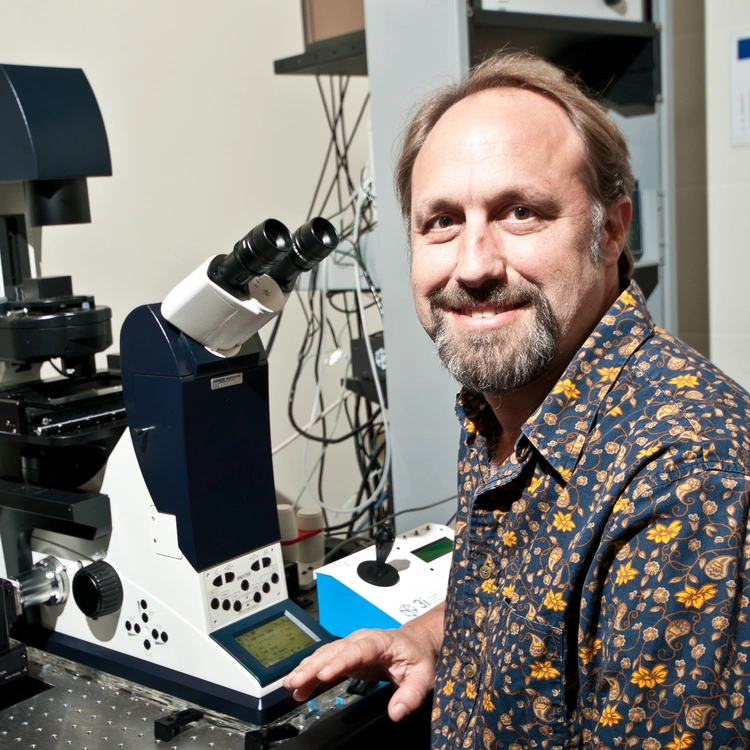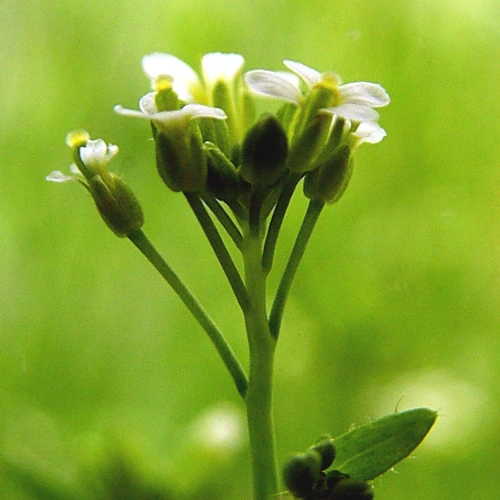Overview
Ehrhardt and his research group to explore cell-signaling and cell-organizational events as they unfold and to tackle how cells generate asymmetries and specific shapes.
A current focus is how the cortical microtubule cytoskeleton— an interior scaffolding that directs construction of the cell’s walls and the growth of the plant—is organized and functions and how this guides patterns of cell growth and division. This scaffolding is crucial for supporting important plant functions such as photosynthesis, nutrient gathering, and reproduction.
Recently, his group provided surprising evidence on how this reorganization process works. The cytoskeleton undergirding in each cell includes an array of tubule-shaped protein fibers called microtubules. The evidence suggests that the direction of a light source influences a plant’s growth pattern.
Imaging data, combined with the results of genetic experiments, revealed a mechanism by which plants orient microtubule arrays. A protein called katanin drives this mechanism, which it achieves by redirecting microtubule growth in response to blue light. It does so by severing the microtubules where they intersect with each other, creating new ends that can regrow and themselves be severed, resulting in a rapid amplification of new microtubules lying in another, more desired, direction.
Ehrhardt received his Sc. B. from Brown University and his Ph.D. from Stanford University, where he was also a postdoctoral fellow before coming to Carnegie as a staff member.
Recently, his group provided surprising evidence on how this reorganization process works. The cytoskeleton undergirding in each cell includes an array of tubule-shaped protein fibers called microtubules. The evidence suggests that the direction of a light source influences a plant’s growth pattern.
Imaging data, combined with the results of genetic experiments, revealed a mechanism by which plants orient microtubule arrays. A protein called katanin drives this mechanism, which it achieves by redirecting microtubule growth in response to blue light. It does so by severing the microtubules where they intersect with each other, creating new ends that can regrow and themselves be severed, resulting in a rapid amplification of new microtubules lying in another, more desired, direction.
Ehrhardt received his Sc. B. from Brown University and his Ph.D. from Stanford University, where he was also a postdoctoral fellow before coming to Carnegie as a staff member.





